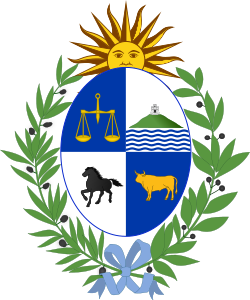 |
|---|
Senate elections were held in Uruguay on 25 November 1900 to elect 6 of the 19 members of the Senate.
 |
|---|
Senate elections were held in Uruguay on 25 November 1900 to elect 6 of the 19 members of the Senate.
| Party | Votes | % | Seats | |
|---|---|---|---|---|
| Colorado Party | 2,887 | 48.17 | 1 | |
| National Party | 2,783 | 46.44 | 5 | |
| Colorado-National United List | 323 | 5.39 | – | |
| Total | 5,993 | 100.00 | 6 | |
| Source: Bottinelli et al. [1] | ||||